How to restore an old table with your own hands?
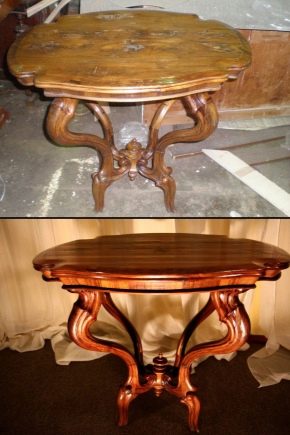
It is not uncommon for a favorite piece of furniture to lose its original appearance, and there is simply no money to buy a new one. In such cases, furniture restoration can help. Let's take a closer look at how to restore a table at home, what is important to take into account and what steps should not be missed.
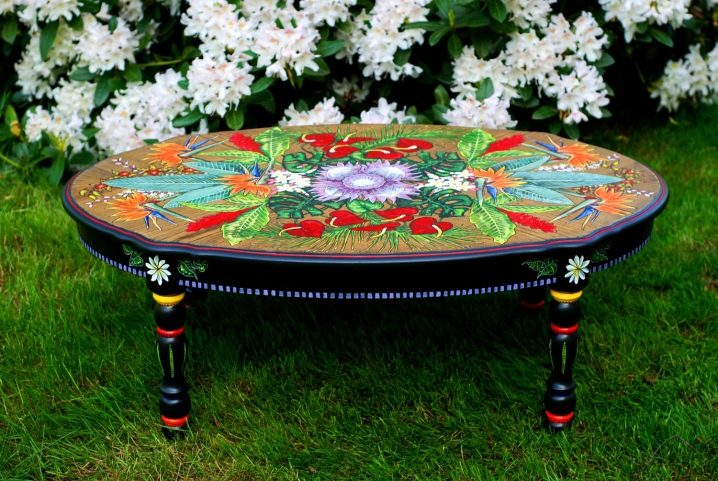
The ways
There are quite a few ways to restore furniture, ranging from a light "cosmetic" decor to a major overhaul of the product. It is not so difficult to restore an old table with your own hands if it does not have any serious damage. In this case, it will be enough to sandpaper and paint the old piece of furniture so that it shines in a completely new light.
Repairing glass tables at home can be more time consuming, as well as a very costly process. If there is a breakage of the glass surface, it may be necessary not only to repair it, but also to buy a new one, since not all glass deformation can be eliminated by gluing and grinding.

The greatest scope for creativity opens up when restoring a wooden table. After all, it is to pieces of furniture made of solid wood that various painting and patterning techniques are perfectly applied, including the decoupage technique. It should be noted that painting and various decorative techniques are most applicable to small tables. This can be used to finish, for example, a small desk or a compact coffee table. But for the restoration of the folding oak model, additional resources may be needed. Since the table has a large solid surface, it will be quite acceptable to finish its parts with materials such as MDF and chipboard. Securely fixed and carefully crafted, they will not only give the table a new lease of life, but also give a completely different look.
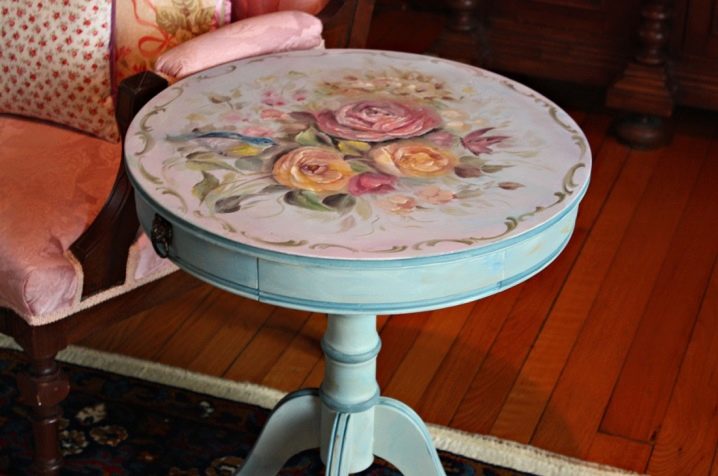
A plastic table can be repaired using the same paint, but this can only be done if the piece of furniture is not severely cracked. Plastic is a rather capricious material, and when exposed to high temperatures, the glued seam may not withstand, which will lead to new damage.
Computer tables made of chipboard and chipboard are often peeled off, as a result of which their appearance becomes sloppy and careless. For the repair of such models, special adhesive tapes and films that imitate a wooden surface are suitable.
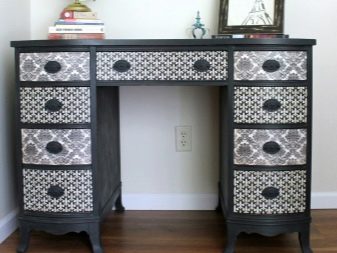
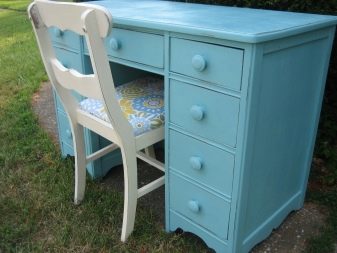
The kitchen table-book must be reconstructed as carefully as possible, using exclusively environmentally friendly and hypoallergenic materials. Since the countertop comes into contact with food quite often, care must be taken to ensure that the materials used to finish its surface are not toxic and harmful to health. The same goes for the children's table.
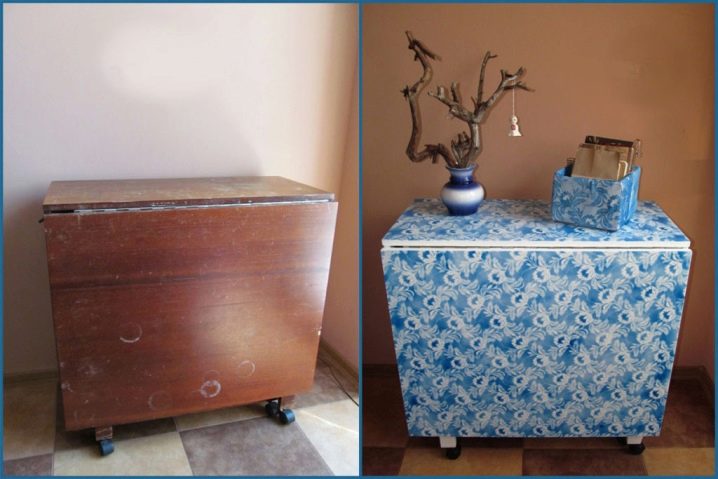
A polished dining table can be restored by sanding the surface and applying a new layer of decorative lacquer to it. So the surface of the furniture attribute will regain its glossy shine.
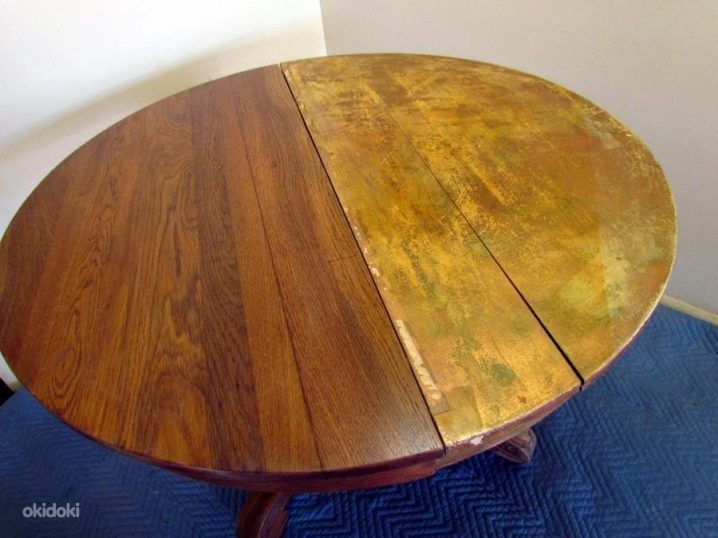
Sometimes it may be necessary to increase the height of, for example, a dressing table, in case of breakage of its legs. In this case, special allowances or new legs of the required size are constructed from wood material.Classic hand-painted can also be used to update any model. This technique is also suitable for sliding tables that do not have any critical surface damage.
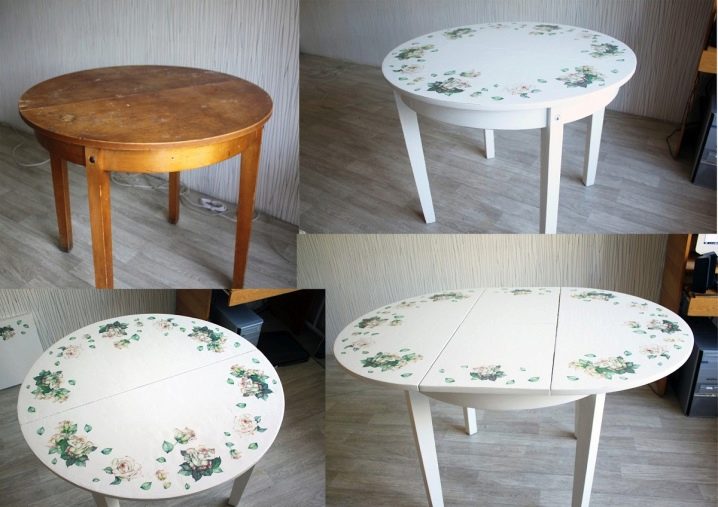
Materials and tools
Various materials and tools may be required for the restoration process.
Let's get acquainted in more detail with their list and purpose:
- To restore tables with a wooden surface, you will definitely need a sander or coarse sandpaper. With these tools, you can make the surface smooth by removing all the roughness;
- To give the surface a fresher look and a different color, you will need a completely ordinary paint. It is quite easy to find out which variety you can paint the table with, since the area of application is almost always described on the packaging of any manufacturer;
- It is best to apply various patterns and ornaments with acrylic paint, since it is very resistant and will hold on to the surface of furniture for a long time.
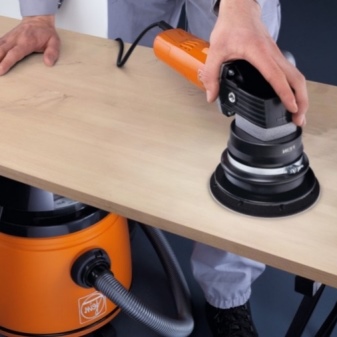
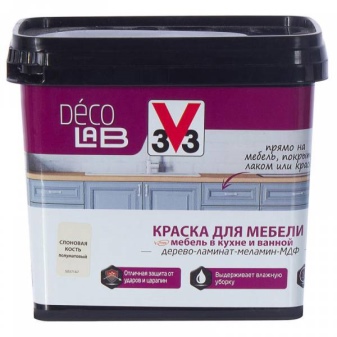
To repair any individual table parts, you may need various construction tools:
- For example, using a hammer, screws and simple nails, you can properly fix the table legs;
- To fasten plastic and MDF panels, you will need to acquire a special glue, which is also called liquid nails and is often used for repairs;
- To work with wooden parts, you must have a small saw or jigsaw with you, with which you can cut the necessary part from a piece of solid wood.
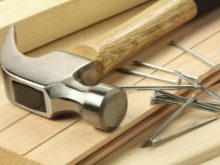
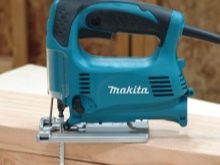
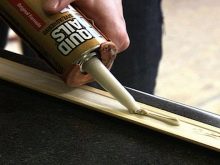
Various small details, which greatly simplify the restoration process, should not be overlooked. So it's best to have a large ruler or tape measure, a bright marker or pencil, building tape, brushes to remove dust and sawdust, protective equipment and a damp cloth.
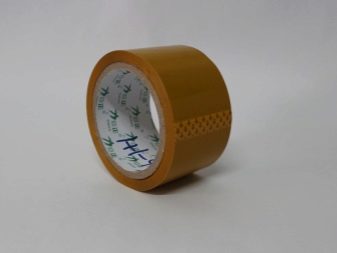

Upgrade process step by step
To repair a piece of furniture at home as a whole, in the form in which it is - an almost insoluble task, since many details require an individual approach. For example, it is better to remove the countertop during the finishing of the remaining parts in order to protect it from causing even greater damage.
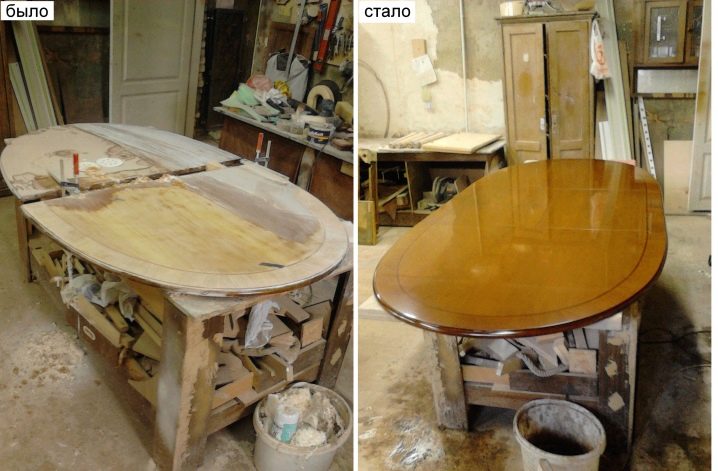
Self-restoration of even the smallest table can become a very time-consuming process if you approach the matter incorrectly, skipping important details and steps. It is for the timely implementation of each stage of the work that it is necessary to draw up an action plan.
Damage inspection
Before proceeding with the restoration, it is necessary to carefully examine the front of the upcoming work. Very often there are products with serious damage, which will not be possible to cope with only through cosmetic finishing. For example, if a leg falls off a table, painting will not fix it.
The first step is to disassemble the table, if the model allows it, and carefully examine the surface of each part for serious damage. If there are none, you can proceed with further actions, depending on the planned restoration work.
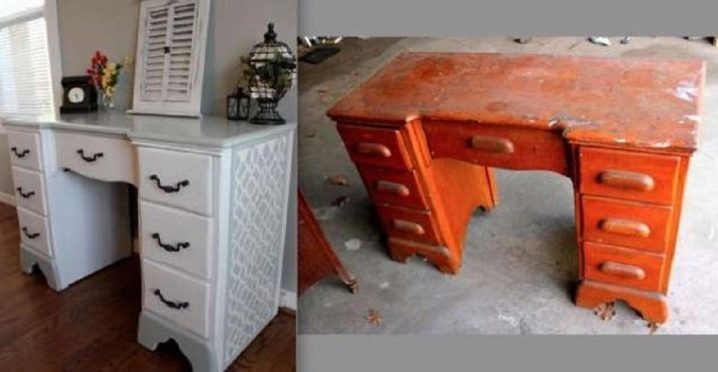
If the surface of the parts has rather deep cuts, severe chips or serious damage, it will be necessary to take measures to eliminate them. If the damage cannot be simply repaired, you may have to resort to replacing some part of the furniture attribute.
Only after a thorough examination and identification of all the "weak points" of the piece of furniture, you can draw up a further action plan and proceed directly to the very process of restoration work. Consistency is very important in this matter.
Grinding
In any repair process, after the definition of the "front of work" is followed by the stage of cleaning and smoothing the surface. The restoration of tables is no exception and, regardless of their types, grinding of individual parts is an indispensable part of the entire process.
If you do not have a special device for sanding the surface at hand, you will need to use sandpaper. To remove the remnants of the old surface, you will need a coarse-grained look.
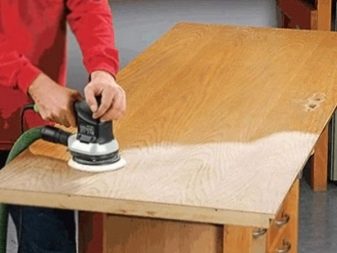
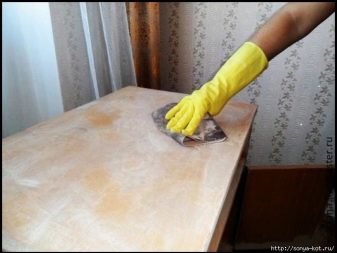
If it is possible to use a tape machine for grinding surfaces, you should opt for it, as it will help speed up the process. But you should know that the machine is only suitable for processing spacious flat surfaces, and small parts will still have to be processed manually.
If the coating is completely removed and you only need to give the surface smoothness, you should use fine-grained paper. In this way, roughness will be smoothed out without damaging the surface. In no case should you sand the surface across the fibers, since they are quite damaged and scratches of varying depth are formed. Processing is carried out exclusively along the location of the fibers. It is also worth using a respirator or a special mask in order to avoid the ingress of dust and small particles of wood into the respiratory tract.
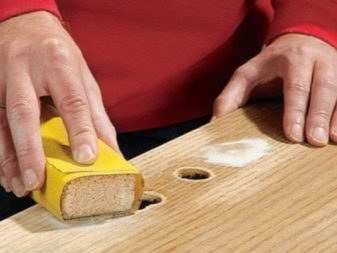
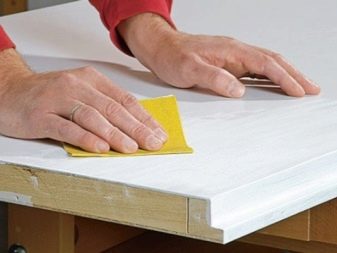
Putty
As mentioned earlier, in the presence of severe damage and deep scratches, it will be necessary to get rid of them. The simplest and most affordable way is putty. In addition, even the largest holes can be sealed with putty, making replacement parts unnecessary.
It is necessary to use exclusively a special putty for wood, since the usual composition for other repair work will not work and will not stick to a wooden surface.
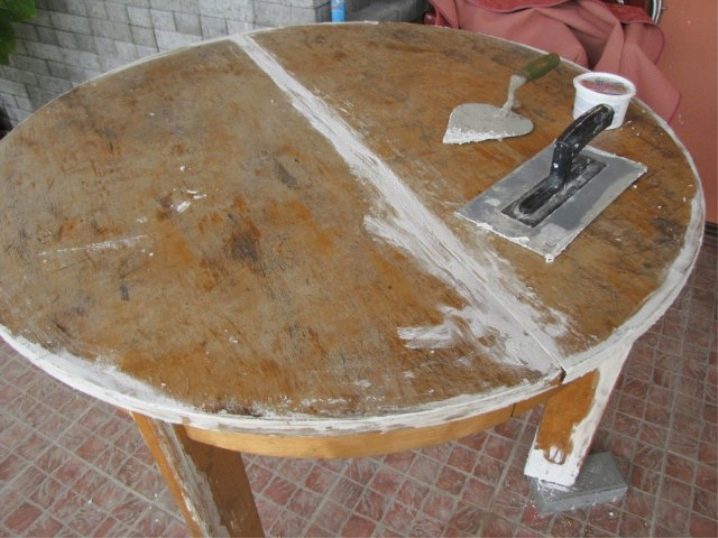
If the surface of the product has only shallow cracks, you can use a stain, and then apply several coats of protective varnish. In this way, the fibrous structure of the wood elements will be preserved and beautifully designed.
After applying the putty and before applying the final coat, the surface must be carefully primed and sanded again. The primer will help degrease parts of the furniture attribute, and re-sanding will smooth out the remaining irregularities.
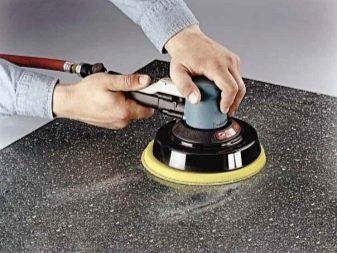

Painting
The final and very important stage that requires special attention is the process of painting the surface. It is important not only to choose the right paint, but also to apply it thoroughly without various formations, lumps, irregularities and to protect the freshly painted surface from small particles of wool, dust and hairs.
Darker shades are best applied in several thin layers. This will help the paint to set better, and the color will be more saturated.
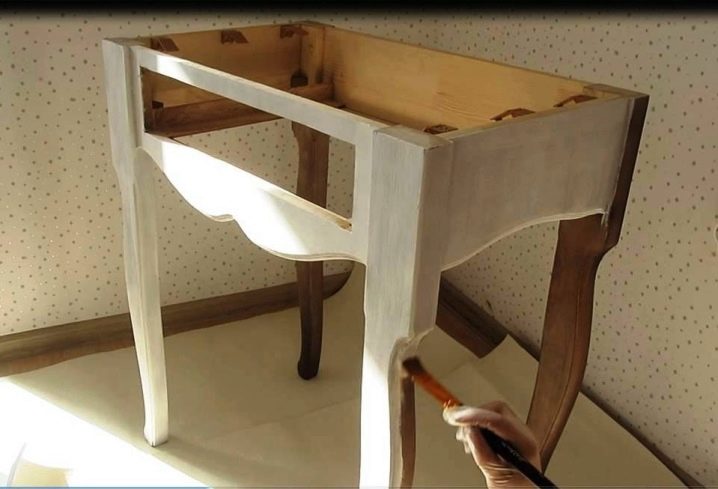
To create the effect of antiquity and scuffs, the painted surface of the table will need to be sanded in certain places.
You should carefully select shades and apply paint very carefully, since in case of dissatisfaction with your work, it will be quite difficult to repaint the table, you will have to do all the laborious work again, starting with the stage of surface grinding.
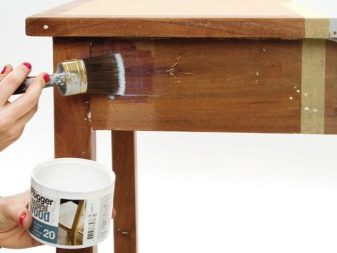
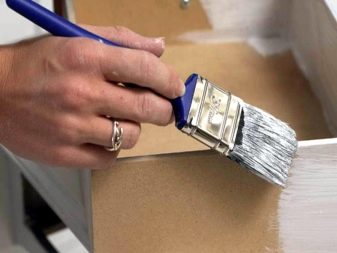
In order for the gloss to shine beautifully on the surface, the surface should be treated with a layer of varnish, and after it dries, also with a protective layer. Most often, various polishing compounds are used to protect the surface of furniture, as well as wax mixtures, which, when rubbed into the surface of the table, will give it a glossy shine, protect it from dirt and a large accumulation of dust.
You can see how to update an old table in the next video.
Decorating and decorating
After painting or in its process, if you wish, you can additionally decorate the surface of the table, giving it a lighter, more relaxed and informal look. Consider the most common and beautiful ways to decorate restored tables:
- Technique "Decoupage". To decorate the table in this style, a white background, special glue, thin napkins with ornaments and patterns or special decoupage paper, as well as varnish, which covers the final layer, are used.The paper is applied to a thin layer of glue and leveled; after drying, it is necessary to varnish the surface.
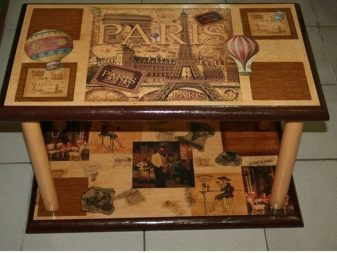
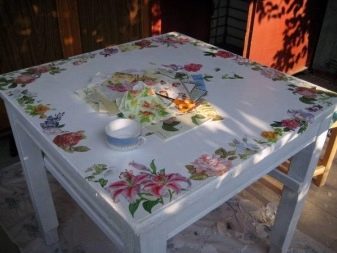
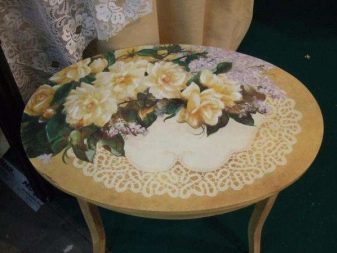

- Glass surface models very often decorated with photo printing. But it is almost impossible to make such a decor at home, so you will have to make a custom-made countertop.
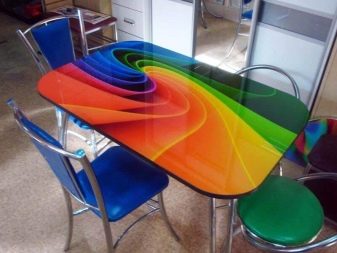



- In addition, parts of the old table with a smooth surface can be seal with a special furniture film... But it is necessary to take into account an important point - you need to make sure that air bubbles do not get under the film when gluing.
- In addition, the antique table can be paint with patterns in the appropriate style, and its surface is treated with a special protective coating.
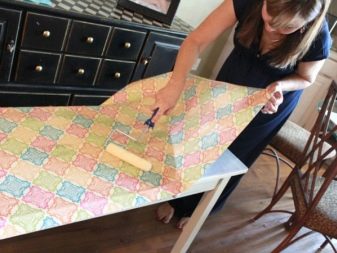

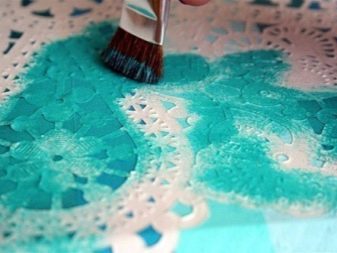
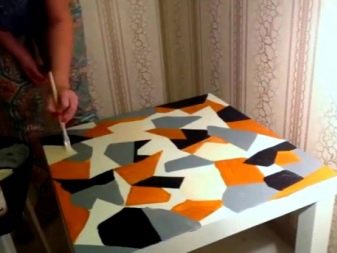













The comment was sent successfully.